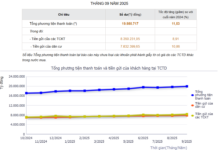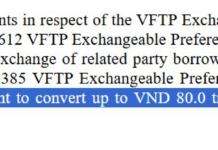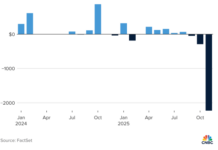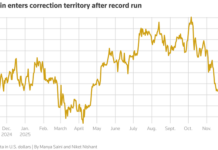Why set credit growth targets?
The State Bank of Vietnam (SBV) has recently reported on its research and plans to phase out the practice of setting credit growth targets for individual credit institutions, as presented at the 7th session of the 15th National Assembly.
Starting in 2024, the SBV will no longer set credit growth targets for foreign bank branches, aligning with their unique characteristics and loan portfolio sizes. Credit growth targets will continue to be assigned to other credit institutions. The SBV is in the process of reviewing and gradually phasing out this measure entirely.
However, the SBV has identified certain challenges and obstacles in implementing this task.
Inflationary pressures persist, posing challenges to the SBV’s monetary and credit policy management as it strives to support economic recovery while maintaining inflation control.
The credit-to-GDP ratio has consistently remained at a high level and is showing an upward trend (132.75% at the end of 2023, compared to 124.89% in 2022 and 123.05% in 2021).
Therefore, the SBV believes that maintaining the credit limit tool is essential for ensuring the safe operation of the banking system, thereby positively contributing to inflation control, economic growth support, and macroeconomic stability.
Prior to 2011, due to the particularities of Vietnam’s economy, which relied predominantly on bank credit to meet capital needs, credit was the primary channel for capital provision to the economy, resulting in rapid credit growth. During the 2007-2010 period, the average credit growth for the entire system was approximately 36% per year.
The credit-to-GDP ratio during this period also increased rapidly, leading to a competitive deposit interest rate environment among credit institutions to secure funds for lending. Consequently, lending rates rose correspondingly, and non-performing loans in the banking system increased significantly. Several credit institutions faced liquidity risks, threatening macroeconomic stability.

Given the nature of Vietnam’s economy, the SBV must continue to control credit by setting growth targets for banks. Photo: Nam Khánh. |
The implementation of credit growth management measures since 2011 has resulted in a significant decrease in system-wide credit growth, from over 30% per year (with a peak of 53.8% in one year) to around 12-14% in recent years. This has contributed to monetary market stability and maintaining inflation below 4%.
At the same time, these measures have encouraged credit institutions to enhance their governance and operational capabilities and improve their safety indicators, leading to a reduction in market interest rates.
Risk of returning to “high” credit growth
Currently, Vietnam’s economy remains heavily reliant on bank credit to meet the capital needs of production, business, and consumption.
In this context, the pressure to provide capital for economic recovery is immense, and the economy’s capital demands depend predominantly on bank credit. As a result, Vietnam’s credit-to-GDP ratio is high, posing risks of macroeconomic instability, as cautioned by several international organizations.
While inflationary pressures have been managed, they still pose potential risks and challenges to the SBV’s governance. The SBV must balance supporting economic recovery while ensuring inflation control and maintaining the stability of the credit institution system.
Given Vietnam’s unique economic conditions, if credit institutions were to pursue credit growth without control measures in place, such as system-wide safety indicators and credit growth limits, the system could revert to the “high” credit growth environment experienced before 2011. This would not only increase non-performing loans and threaten the safety of the banking system but also risk macroeconomic instability and inflationary pressures.
Hence, maintaining the credit limit tool is vital for ensuring the safe operation of the banking system and positively contributing to inflation control, economic growth support, and macroeconomic stability.
The SBV believes that phasing out this measure requires a cautious and appropriate roadmap, ensuring necessary conditions and gradual implementation in line with market conditions.
In its governance, the SBV has been combining the application of international standard safety indicators in the operations of credit institutions with the allocation of credit growth targets. This approach helps stabilize the monetary market, control inflation, enhance governance capabilities, and improve the safety indicators of credit institutions.
Simultaneously, to transition to credit control through safety indicators, the SBV is directing credit institutions to implement debt restructuring and bad debt handling solutions and enhance governance standards in line with international practices. However, this must be accompanied by an effective economic restructuring process to elevate the role and promote the healthy development of the capital market. This will address the mid- and long-term capital needs of the economy and reduce reliance on bank credit.
Tuân Nguyễn





































